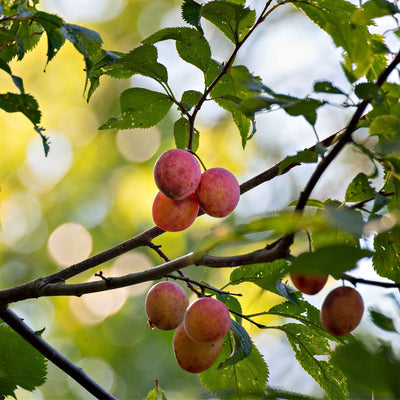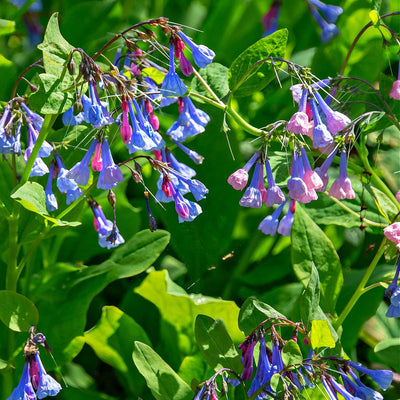Oh Deer!
Oh, Deer!
Deer might be cute little creatures, but they can devastate your lawn and garden. In many parts of the country, deer have grown so acclimated to humans and domestic pets that they no longer fear walking up into your yard. Deer not only destroy expensive vegetation, but they also carry Lyme disease-infected ticks and are a leading cause of car accidents. Here, we delve into deer deterrence.
Barrier fencing
The single most effective way to convince deer they aren’t wanted is to fence your entire yard. However, deer are agile and can quickly jump twice their height. A privacy fence is an ideal barrier, but they are costly and may not be a viable option in all situations. Deer nets are almost invisible to block off wooded areas or patches of unique produce. These black rubber-like nets are easy to install, requiring high stakes every 15 feet and a few simple clips to stretch and hold the fencing material.
Unfortunately, deer are persistent; if they want in, they will usually find a way. Deer are experts at finding weak points in your defense system, such as driveways, so you may need to employ more than one line of defense.
Sprays
Deer, like all mammals, use their sense of smell to target palatable food sources. Hundreds of commercial sprays claim to interrupt their desire to nibble your lawn by emitting putrid scents, such as rotten egg, pepper, and garlic. Other solutions are based on blood meal - a powder made from the blood of food stock animals after slaughter. It enriches the soil and is an effective deterrent against deer and a few other garden pests. The most significant caveat of sprays is the need to reapply often. The scent becomes weaker over time, and rain, dew, and other air moisture wash the odor away. A word of warning, though, sizeable urban deer populations will eat anything, malodourous or not, if they are hungry, so your time and efforts may not leave your lawn safe without other measures.
Along the same line as foul-smelling sprays, you can purchase predator urine online or at retail stores and leave it strategically planted around your lawn to warn deer that they may be invited to dinner as the main course. Chipmunks and moles also tend to shy away from the scent of wolves and coyotes.
Scare tactics
Keeping Bambi at bay is a full-time job if you plan to scare deer with loud noises or flashing lights. There are a few hands-free ways you can use movement to your advantage, even when you're away. If you have room in your home, you may want to invite a new dog into your family. Dogs are descendants of wolves and thus are instinctually drawn to deer as prey and have no problem initiating a lawn-saving chase on your behalf. Motion-controlled scarecrows and other electronic devices may also be a good option if you place them in the right spot.
Perturbing plants
If your yard has become an all-day buffet, it may be time to change the menu. Deer are attracted to several flowering plants like clover, alfalfa, and white ladino. They also graze on low-growing fruit trees such as cherry and plum. Plants that deer don't generally dine on are those with fuzzy leaves, strong fragrances, or a bitter taste.
The spring perennials that deer dislike includes the bleeding heart, a shade-loving plant that resembles a fern; bluebell, a small, flowering bulb with tiny pink, white, or blue bell-shaped flowers. Crocus, a low-lying plant with clumps of purple, yellow, or white flowers; daffodil, a showy flower with yellow or white blooms; and fritillaries, a charming plant featuring a star-shaped stem topped with bell-shaped flowers.
In the summer, try Bluebeard, a shrub-like plant with clustering flowers in deep shades of blue; catmint, a small flowering herb in the mint family; hyssop, purple flowers with large leaves. Lavender, a hardy herb that blooms ultra-fragrant purple flowers; monkshood, a shade-loving perennial that tolerates temperatures to -25 degrees; or mullein, a hardy plant with tall spike-like flowers.
Groundcovers that make deer think twice about trampling your lawn include:
- Bugleweed is a creeping, flowering evergreen.
- Lily Of The Valley, featuring dainty white bell-shaped flowers.
- Pachysandra, a shade thriving cover with tiny pink or white blooms.
- The spotted deadnettle is an attractive low-lying plant with pale pink or white flowers.
Deer also turn away at certain shrubs like aralia, a medium-sized bush with sizeable green foliage and tiny off-white flowers; Andromeda, a spherical shrub with low hanging flower clusters; boxwood, a hardy hedging shrub; cinquefoil, a cold-tolerant plant with small flowers that resemble roses; oleander, a towering evergreen; and Russian olive,
These plants offer more than just animal alleviating abilities; many attract scores of helpful wildlife like birds and bees.



